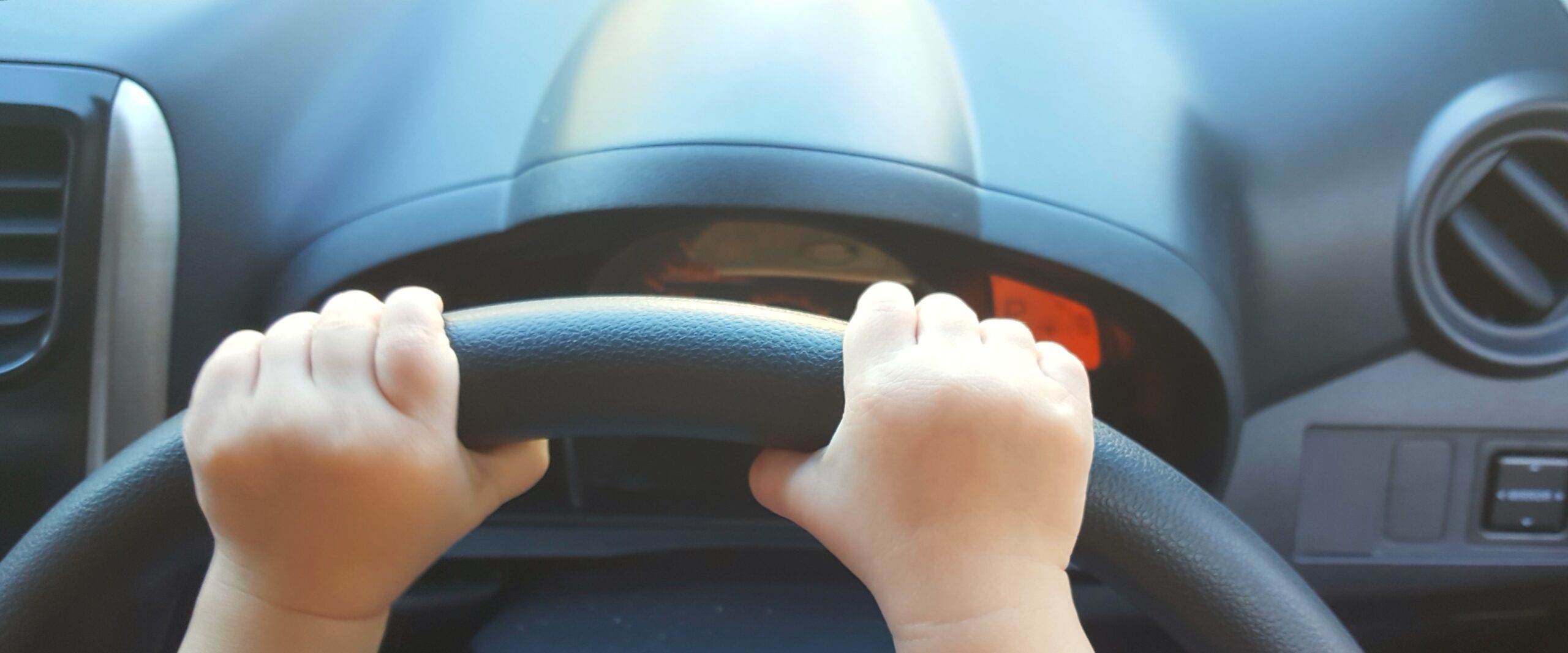
Moving With a Baby – Tips and Ideas
Moving to a new home can be both exciting and challenging, and when you have a baby, the process becomes even more complex. From packing essentials to ensuring a smooth transition, there are numerous considerations to keep in mind.
Here are some tips and ideas to make moving with a baby a less daunting experience. By planning ahead, staying organized, and prioritizing your baby’s needs, you can navigate this significant life change with ease.
Preparing in Advance: Creating a Moving Checklist
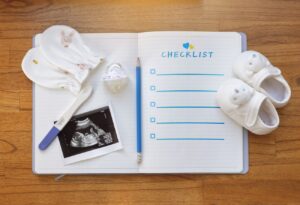
Moving with a baby requires meticulous planning and organization to ensure a smooth and stress-free transition. One essential step in this process is preparing in advance by creating a moving checklist. A well-thought-out checklist helps you stay organized and ensures that no important tasks or items are overlooked amidst the chaos of moving.
- To begin, start by identifying the key tasks that need to be completed before, during, and after the move. This includes notifying relevant parties about your change of address, such as healthcare providers and pedatricians, childcare facilities, and utilities. It’s also crucial to research and select a reputable moving company if you decide to hire professionals. In over 30 years ABC Moving Systems has done many hundreds if not thousands of moves that included the delicated aspects of moving with a baby.
- Next, consider the specific needs of your baby. Make a comprehensive list of essential items that you will need during the moving process, such as diapers, formula, baby food, clothing, bedding, and toys. Don’t forget to include any special equipment, like a stroller or a car seat, which will be necessary for transportation. The Bump has articles on various aspects of child care.
- Additionally, factor in the time required for packing and labeling baby-related belongings separately. This will make unpacking and setting up your baby’s room in the new home much easier. Create a system for labeling boxes to quickly locate items specific to your baby’s needs.
- Lastly, allocate time for adjusting your baby’s routine. Moving can disrupt their sleep patterns and daily rhythm. Gradually introduce changes in their environment and maintain a familiar routine as much as possible to provide a sense of stability amidst the transition.
By preparing in advance and creating a detailed moving checklist, you can alleviate some of the stress associated with moving with a baby. It allows you to tackle tasks systematically and ensures that you have everything you need to keep your little one comfortable and content throughout the process.
Baby-Proofing the New Home: Safety First
When transitioning to a new residence alongside a baby, the safety of your little one should be a top priority. Taking the necessary steps to baby-proof your new home is essential. Start by conducting a comprehensive inspection of each room, paying close attention to potential hazards like sharp corners, electrical outlets, loose cords, and unstable furniture. It’s crucial to identify and address these risks early on to ensure a safe environment for your child.
One significant measure to take is securing furniture. Heavy pieces such as bookshelves and dressers should be anchored to the wall to prevent tipping accidents. Additionally, installing safety gates at both the top and bottom of stairs and in doorways can effectively restrict access to hazardous areas. This will help create boundaries and minimize the risk of your baby venturing into dangerous spaces.
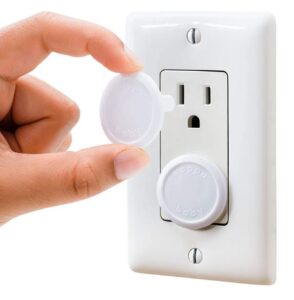 Another critical aspect of baby-proofing is covering electrical outlets. To prevent your baby from sticking their fingers or objects into the sockets, install outlet covers or outlet plugs throughout the house. Furthermore, it is essential to lock cabinets and drawers that contain harmful substances, sharp objects, or fragile items. Utilizing childproof locks or latches will help keep these areas securely closed and inaccessible to your little one.
Another critical aspect of baby-proofing is covering electrical outlets. To prevent your baby from sticking their fingers or objects into the sockets, install outlet covers or outlet plugs throughout the house. Furthermore, it is essential to lock cabinets and drawers that contain harmful substances, sharp objects, or fragile items. Utilizing childproof locks or latches will help keep these areas securely closed and inaccessible to your little one.
In order to safeguard against accidents, consider attaching corner guards to the sharp edges of furniture. This simple measure can significantly reduce the likelihood of injuries in case of accidental collisions. Additionally, it is essential to tie up cords from blinds, curtains, and electronics, keeping them out of your baby’s reach to prevent potential choking hazards.
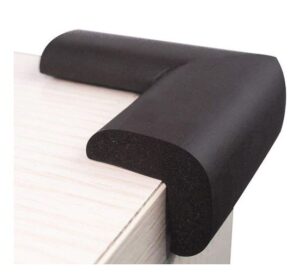
As you settle into your new home, don’t overlook the importance of window safety. Make sure all windows have sturdy screens or childproof locks to prevent falls or accidents. Remember that every home is unique, so take the time to thoroughly assess potential dangers specific to your new living space.
Keep in mind that baby-proofing is an ongoing process. As your baby grows and develops, periodically reassess and update the safety measures to align with their changing needs and abilities. By prioritizing safety during the moving process, you will gain peace of mind and create a secure environment for your little one in their new home.
Managing the Logistics: Hiring Movers or DIY?

When moving with a baby, one of the key decisions you’ll face is whether to hire professional movers or take on the task yourself. Both options have their advantages and considerations, so it’s important to assess your specific circumstances before making a decision.
- Hiring professional movers can significantly alleviate the physical and logistical burdens of moving. They have the expertise to efficiently pack, transport, and unload your belongings, allowing you to focus on caring for your baby. Additionally, professional movers often offer insurance coverage for your possessions, providing an added layer of security during the move. However, it’s crucial to research and select a reputable moving company to ensure a smooth and reliable experience.
- If you hire a moving company, it is recommended that you have the baby the off-site during the move. Perhaps hire a trusted babysitter. Or if possible a family member. Or if you are a couple, have one person manage the move and another watch the baby. That would be safest for the baby during a move.
- On the other hand, opting for a DIY move gives you more control over the process and can be more cost-effective. You can plan the move at your own pace and have a better understanding of how your belongings are packed and handled. DIY moves also provide flexibility in accommodating your baby’s needs and preferences throughout the process. However, keep in mind that moving without professional assistance requires significant physical effort and time investment.
- Consider factors such as your budget, time constraints, the size of your household, and the availability of assistance from friends or family. Evaluate your ability to handle the physical demands of the move while also caring for your baby’s needs.
Ultimately, the decision to hire movers or tackle the move yourself depends on your personal circumstances and priorities. Whichever option you choose, ensure that the logistics are well-planned, taking into account the safety and well-being of your baby throughout the entire moving process. ABC Moving Systems is well prepared to assist in your moving adventure.
Packing Essentials: Baby’s Belongings and Necessities
When moving with a baby, it’s crucial to plan carefully and pack all the essential items and necessities to ensure that your baby has everything they need during the transition. Here are some key items to pack for your baby.
Firstly, pack an ample supply of comfortable clothing, including onesies, sleepers, socks, and hats, taking into account weather changes. It’s important to have enough clothes to keep your baby cozy and appropriately dressed.
Next, remember to bring along your baby’s bedding, including crib sheets, blankets, and any favorite comfort items like a stuffed animal or a special blanket that will provide familiarity and comfort during the move.
Don’t forget to stock up on an adequate supply of diapers, wipes, diaper cream, and disposable diaper bags. It’s a good idea to have a diaper bag readily accessible during the move for easy access to these essentials.
For feeding supplies, make sure to pack bottles, formula or breast milk, sterilizing equipment, bibs, burp cloths, and a portable high chair or booster seat for mealtime convenience. If your baby has started solid foods, bring along a variety of age-appropriate baby food jars, pouches, or homemade purees, along with spoons and bowls.
Ensure you have any necessary medications, such as fever reducers or allergy medications, as well as a first-aid kit, thermometer, and any specific healthcare items your baby requires. HealthyChildren.org has further information on this subject that you can refer to.
To keep your little one entertained and comforted during the move, pack toys, books, pacifiers, and a baby carrier or sling.
Lastly, include toiletries like baby shampoo, lotion, baby wash, a brush or comb, and a nail clipper in your baby’s toiletry bag.
Remember to pack these essentials in a separate, easily accessible bag or box, labeled clearly to avoid confusion during the move. Having these items readily available will help ensure your baby’s comfort and minimize stress for both of you during the transition to your new home.
Maintaining a Routine: Familiarity Amidst Change
Maintaining a routine is vital when moving with a baby as it provides a sense of familiarity and security amidst the upheaval of change. Disruptions to your baby’s routine during the moving process can lead to increased stress and unease. Here are some key points to consider in order to maintain a routine:
- Firstly, prioritize your baby’s sleep schedule. Ensure they have a comfortable and familiar sleeping environment, even if it means setting up their crib or bassinet before arranging other areas of the new home. Stick to their regular bedtime routine as closely as possible, incorporating familiar activities such as bath time and reading a bedtime story.
 Secondly, maintain consistent mealtimes and feeding routines. Whether breastfeeding, bottle-feeding, or introducing solid foods, try to adhere to your baby’s regular feeding schedule. Familiarity with their feeding routine will provide comfort and stability during the move.
Secondly, maintain consistent mealtimes and feeding routines. Whether breastfeeding, bottle-feeding, or introducing solid foods, try to adhere to your baby’s regular feeding schedule. Familiarity with their feeding routine will provide comfort and stability during the move.- Additionally, continue engaging in playtime and interactive activities with your baby. Carve out dedicated moments for play and interaction, even amidst the chaos of packing and unpacking. These moments of connection will help reassure your baby and provide a sense of normalcy.
- Lastly, be mindful of your own well-being. As a parent, your own self-care is essential in maintaining a sense of calm and stability for your baby. Prioritize rest, nutrition, and self-care activities to ensure you have the energy and patience to navigate the moving process with your little one.
By maintaining a routine during the move, you can minimize disruptions to your baby’s daily life and provide them with a sense of security. Consistency and familiarity will go a long way in helping them adjust to their new surroundings more smoothly.
Traveling with a Baby: Tips for a Smooth Journey
Traveling with a baby during a move can be a challenging endeavor. To ensure a smooth journey, consider the following tips:
Plan the travel logistics in advance: Determine the best mode of transportation and schedule your journey to accommodate your baby’s needs, such as nap times or feeding schedules.
Pack a diaper bag with essentials: Bring an easily accessible diaper bag stocked with diapers, wipes, a changing pad, extra clothing, snacks, bottles, formula, and any necessary medications.
Comfortable seating arrangements: If traveling by car, use a rear-facing car seat suitable for your baby’s age and size. Ensure the car seat is installed correctly and securely.
Keep your baby entertained: Pack toys, books, and favorite comfort items to keep your baby occupied during the journey. Consider attaching a mirror or toys to the car seat for visual stimulation.
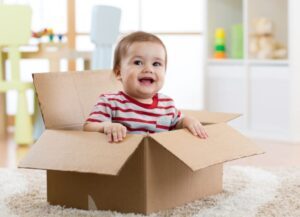
Take breaks: Plan regular breaks during long journeys to allow your baby to stretch, feed, or have a diaper change. This will help keep them comfortable and reduce fussiness.
Dress your baby in comfortable clothing: Choose loose-fitting and breathable clothing for your baby to ensure they remain comfortable throughout the journey.
Use baby carriers or slings: Utilize a baby carrier or sling for hands-free convenience, especially during airport transfers or when navigating crowded areas.
Stay calm and flexible: Expect some unexpected challenges during travel and be prepared to adapt. Stay calm and patient, as your baby may pick up on your emotions.
Remember, traveling with a baby requires extra preparation and patience. By planning ahead, ensuring comfort, and being flexible, you can make the journey more enjoyable for both you and your little one.
Settling into the New Home: Creating a Baby-Friendly Space
Settling into a new home with a baby involves creating a safe and comfortable environment that caters to their needs. Here are some key considerations to help you establish a baby-friendly space:
- Firstly, focus on baby-proofing the new home. Assess potential hazards such as sharp corners, electrical outlets, and cords, and take necessary measures to ensure a safe environment. Install safety gates, secure furniture to prevent tipping, and cover electrical outlets.
- Designate a dedicated space for your baby’s belongings. Set up their nursery or sleeping area first, ensuring it is equipped with their crib or bassinet, a changing table, and storage for their clothing and essentials. Arrange furniture in a way that promotes easy access and supervision.
- Create a soothing and familiar atmosphere. Hang up familiar wall decorations, place their favorite toys and comfort items within reach, and use bedding and linens with familiar scents. This will provide a sense of continuity and comfort during the transition.
- Consider the functionality of the space. Arrange items strategically to make caregiving tasks more convenient. Keep diapers, wipes, and baby care supplies readily accessible, and organize baby’s clothing and essentials in a way that is easy to navigate.
- Prioritize comfort and sensory stimulation. Use soft lighting and soothing colors in the nursery to create a calming environment. Incorporate soft rugs, cushions, and cozy seating areas for you and your baby to relax.
- Finally, establish a routine in the new home. Stick to familiar schedules and rituals to provide a sense of predictability and stability for your baby. Maintaining consistent meal and nap times will help them feel secure in their new surroundings.
By focusing on creating a baby-friendly space in your new home, you can ensure your little one feels safe, comfortable, and supported during this significant transition.
Seeking Support: Enlisting Help from Friends and Family
When moving with a baby, enlisting support from friends and family can greatly ease the process and provide valuable assistance. Here are some reasons why seeking help is beneficial and how you can involve your loved ones:
Emotional support: Moving can be an emotionally taxing experience, and having friends and family by your side can offer comfort and encouragement during this time of change.
Physical assistance: Moving involves a lot of physical labor, from packing and lifting heavy boxes to assembling furniture. Enlisting help from loved ones lightens the workload and allows you to focus on caring for your baby.
Babysitting support: Arrange for friends or family members to take care of your baby during the moving day or during particularly hectic times. This enables you to concentrate on the logistical aspects of the move without worrying about your little one’s well-being.
 Packing and unpacking: Friends and family can help with packing and unpacking, ensuring that your baby’s belongings are properly organized and readily accessible in the new home.
Packing and unpacking: Friends and family can help with packing and unpacking, ensuring that your baby’s belongings are properly organized and readily accessible in the new home.
Meal assistance: Coordinate meal deliveries or ask friends and family to prepare meals for you during the moving process. This helps alleviate the stress of cooking while juggling the demands of a baby and a move.
Emotional well-being: Friends and family can provide a listening ear and offer emotional support during this transitional period. They can be a source of advice, encouragement, and reassurance.
Moral support: Having loved ones present during the moving process can boost morale and create a positive atmosphere. Their presence can make the experience more enjoyable and less overwhelming.
Reach out to your support network early on, communicating your needs and asking for their help and involvement. Remember to express your gratitude and appreciation for their assistance. Moving with a baby becomes a more manageable and less stressful undertaking when you have the support of your loved ones. ABC Movers Los Angeles has over 30 years moving families with children, from small apartments to large mansions.
Moving With a Baby – Overview:
Moving with a baby requires careful planning and consideration. By creating a moving checklist, baby-proofing the new home, deciding on the logistics, packing essentials, maintaining a routine, traveling smart, creating a baby-friendly space, and seeking support, you can ensure a smoother transition for both you and your little one. Moving can be a stressful experience, but with the right strategies and preparation, you can make it a positive and manageable process, setting the stage for a fresh start in your new home.

